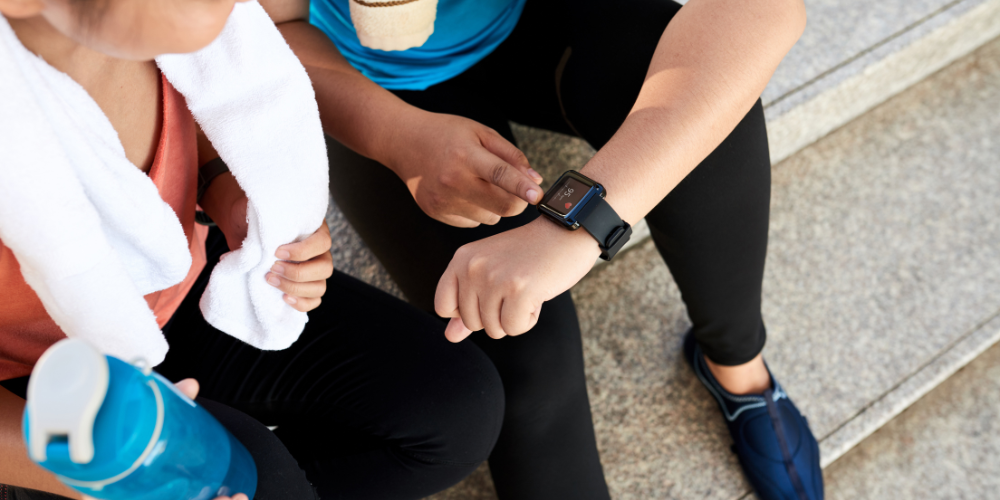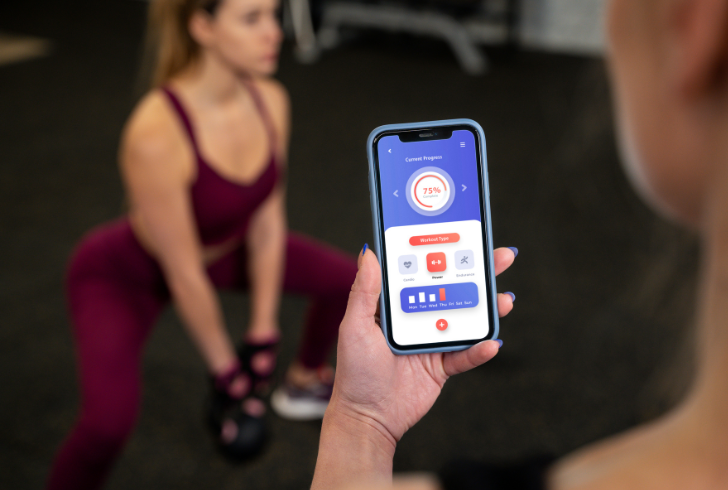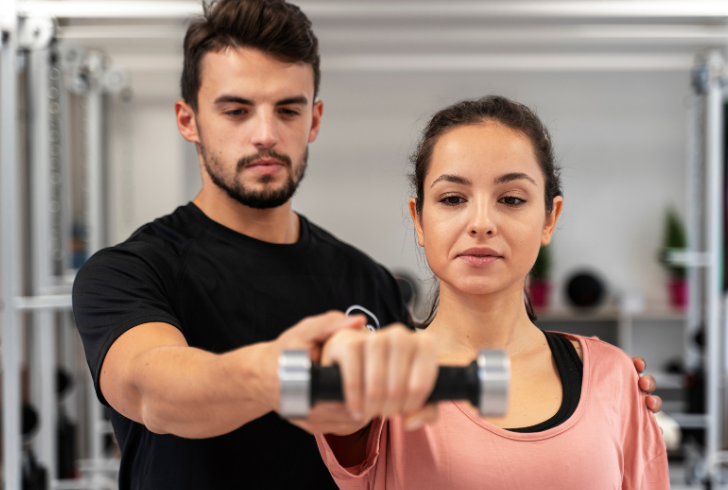
Smarter Workouts vs Smart Marketing | What AI Fitness Apps Really Offer

Finding the drive to exercise can be tough, and figuring out which AI app might help is another challenge entirely. These tools promise everything from tailored workouts to smarter goal tracking. For people looking to add structure and accountability, the technology can feel like a step in the right direction—if it lives up to the promises.
Whether it’s adjusting your reps, monitoring your recovery, or tailoring a plan based on your day-to-day energy, these apps claim to know what you need before you do. But here’s a closer look at what they can and can’t do.
What Powers These AI Fitness Apps?
Behind the sleek interface and friendly nudges is a powerful engine: data—lots of it. Today’s AI fitness tools run on machine learning systems that interpret your daily habits, workout performance, recovery patterns, and personal goals. Some platforms even strive to build a “digital twin”—a detailed fitness profile that adapts as your body and routines change over time.

Freepik | pressfoto | AI fitness tools leverage machine learning to understand your fitness journey.
This digital twin isn’t just about tracking workouts. It factors in how much sleep you’re getting, your rest days, and how your body reacts to different training styles.
AI apps use this constant feedback loop to recommend:
– Daily workout intensity
– Recovery-focused exercises
– Sleep and nutrition tips
– Adjustments based on fatigue or injury risk
Jonathan Shottan of Tonal highlights that each “training modality” added—like yoga, strength circuits, or cardio routines—opens new streams of behavioral data, helping refine user-specific plans.
How to Get the Most Out of Your AI Coach
No matter which platform you use—whether it’s Fitbod, Jefit, TrainAsOne, or Runna—the effectiveness of your AI fitness coach often comes down to how you interact with it. To actually benefit from its insights, you need to be specific and honest with your inputs.
Tailor Your Prompts and Preferences:
1. Looking to improve core strength? Mention if you prefer dumbbells over machines.
2. Running-focused? Specify if you’re training for speed or endurance.
3. Injured or under the weather? Let the app know—it’ll often offer lighter mobility sessions instead.
The more accurate your data and preferences, the better the app’s recommendations. These systems aren’t mind readers, but they’re pretty good at adjusting—if you guide them with meaningful prompts.
AI Can Adapt, But It’s Not Human
One major selling point is that these apps respond in real time. Say you’re sore, under-recovered, or just not at full strength. AI tools can automatically adjust your workout plan based on current feedback, choosing something more restorative over an intense HIIT session.
Clayton Kim, CTO of Flykitt, emphasizes that while AI can build solid routines, real progress comes from knowing when and how to change course. Human trainers excel at reading subtle physical cues, adjusting your form on the spot, and keeping you mentally invested. AI? Not so much.
Still, Kim notes that AI does a decent job mimicking these adjustments, particularly when users log their fatigue levels, track recovery, or shift goals.
The Human Element Still Matters

Freepik | AI apps lack the real connection and accountability found with a personal trainer.
Even as AI apps improve, they aren’t built to replace the real connection and accountability a trainer brings. Human coaches offer more than data—they bring emotional support, push you through mental blocks, and make real-time decisions based on your energy, mood, and movement patterns.
That’s especially important for beginners or anyone returning after a long break. AI apps may give great structure, but they can’t sense hesitation in your squat form or notice the stiffness in your shoulders.
The Future of AI in Fitness
The future of AI fitness coaching is heading beyond step counters and rep trackers. Some developers are already testing real-time vision-based feedback tools—think cameras in gyms that offer instant posture corrections or suggest safer alternatives mid-set.
Expect features like:
– Live AI avatars guiding your workout via video
– Personalized feedback based on the form captured by sensors or a camera
– Gym apps integrating AI systems that adjust stations based on your logged data
This type of technology won’t replace human trainers, but it could redefine hybrid coaching. Trainers may start using AI to manage larger client rosters more effectively, and users might enjoy smarter workouts even while traveling or working out solo.
AI fitness apps offer convenience, personalization, and consistent tracking. These are tools that can enhance your fitness journey. However, for all their smart features, they still rely on how much effort, honesty, and consistency users bring to the table.
Whether you’re chasing new PRs or just trying to stay consistent, AI can help guide the way—but the real results come from how you use it.
More in Health & Fitness
-
GOLDEN AGE STARS WHO ARE STILL ALIVE AND DOING GREAT AT RETIREMENT!
Joely Fisher (57) -Burbank It’s fair to say that actress Joely Fisher was born with a great showbiz background since she’s...
May 26, 2025 -
GOLDEN AGE STARS WHO ARE STILL ALIVE AND DOING GREAT AT RETIREMENT!
Richard Dean Anderson – Age 74 Like other veteran actors who stay in the headlines for their excellent work, Richard is...
May 21, 2025 -
`
Try This 30-Day Rule to Start Living a More Minimalist Life
Simplifying life doesn’t mean sacrificing comfort. It’s about clearing the clutter—physical and mental—to create room for what truly matters. The 30-day...
May 3, 2025 -
`
The Surprising Health Benefits of Walking Backwards
Walking is one of the easiest ways to stay active, but it turns out there’s a lot more to it than...
April 25, 2025 -
`
Grocery Prices May Climb as New Tariffs Hit Imported Food
Rising food prices are nothing new, but recent tariff plans could make everyday grocery staples even more expensive. A new round...
April 18, 2025 -
`
Foods and Drinks to Avoid at the Airport, According to Experts
Airports are a hub of activity, offering a wide range of food and drink options as travelers rush to board their...
April 12, 2025 -
WEIBLICHE STARS, DIE MAKELLOS GEALTERT SIND UND WUNDERSCHÖN AUSSEHEN!
Nicole Seibert – Alter 55 Die damals erst 17-jährige Nicole siegte 1982 mit dem Lied Ein bisschen Frieden beim Eurovision Song...
March 20, 2025 -
WEIBLICHE STARS, DIE MAKELLOS GEALTERT SIND UND WUNDERSCHÖN AUSSEHEN!
Nicole Seibert – Alter 55 Die damals erst 17-jährige Nicole siegte 1982 mit dem Lied Ein bisschen Frieden beim Eurovision Song...
March 20, 2025 -
Il est difficile de croire que ces célébrités féminines du passé sont toujours aussi impeccables
Claudia Schiffer, 50 ans Parmi nos beautés éternelles, Claudia Schiffer est le symbole du charme et de l’élégance des années 1990....
March 20, 2025










You must be logged in to post a comment Login